Shushtar Hydraulic System: Ancient Engineering Wonder
The Shushtar Historical Hydraulic System stands as a remarkable testament to ancient engineering prowess and ingenuity.
As one of the most remarkable UNESCO World Heritage sites, it represents a masterpiece of water management, dating back to the 5th century AD during the Sassanian era.
Exploring the Shushtar Historical Hydraulic System offers an opportunity to witness the intricate interplay between human innovation and the natural world.
Historical Background of Shushtar Hydraulic System
The origins of the Shushtar Historical Hydraulic System can be traced back to a rich tapestry of history, where the need for efficient water management intersected with the brilliance of ancient civilizations. This intricate system stands as a testament to the ingenuity of the Elamites, Achaemenids, and Sassanians, each contributing a unique chapter to its development.
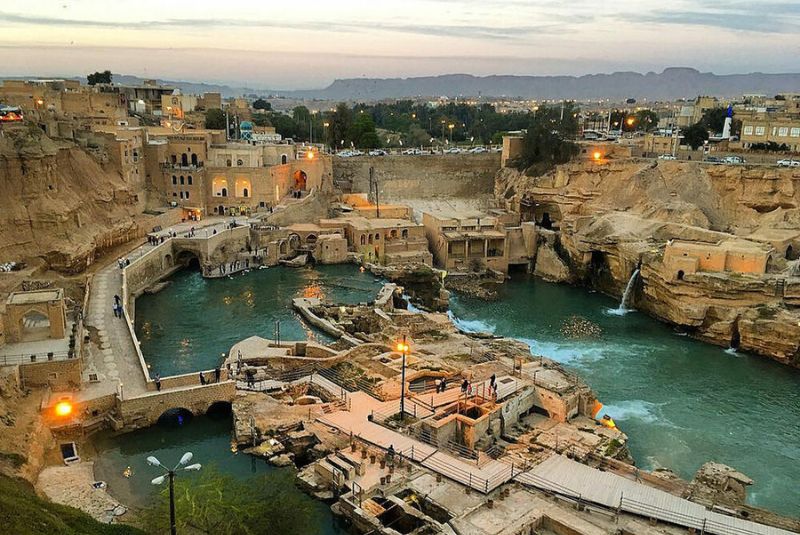
Elamites: Pioneers of Water Management
The Elamites, among the earliest inhabitants of the region, recognized the strategic importance of water management for agricultural prosperity. They laid the groundwork for the hydraulic system's construction by building rudimentary canals and dams to harness the power of the Karun River. Their innovations set the stage for the remarkable feats to come.
Achaemenids: Architectural Ambition
Under the Achaemenid Empire, the hydraulic system saw transformative advancements. The Achaemenid rulers, known for their architectural ambitions, expanded the system's scale and complexity. The construction of the Band-e Kaisar, or Caesar's Bridge, exemplified their prowess in engineering as they merged functionality with grandeur.
Sassanians: Mastering the Waterways
The Sassanian era marked a zenith in the development of the hydraulic system. The Sassanian rulers recognized the vital role of water management in sustaining their empire's growth. Elaborate canals, intricate sluice gates, and ingenious water mills were integrated into the system, showcasing a level of sophistication rarely seen in the ancient world.
Shushtar Hydraulic System Location and Geography
The Shushtar Historical Hydraulic System is situated in the city of Shushtar, which is located in the southwestern part of Iran, in the Khuzestan province. This province is renowned for its rich historical and cultural heritage, as well as its unique geography shaped by the meandering Karun River and its tributaries.
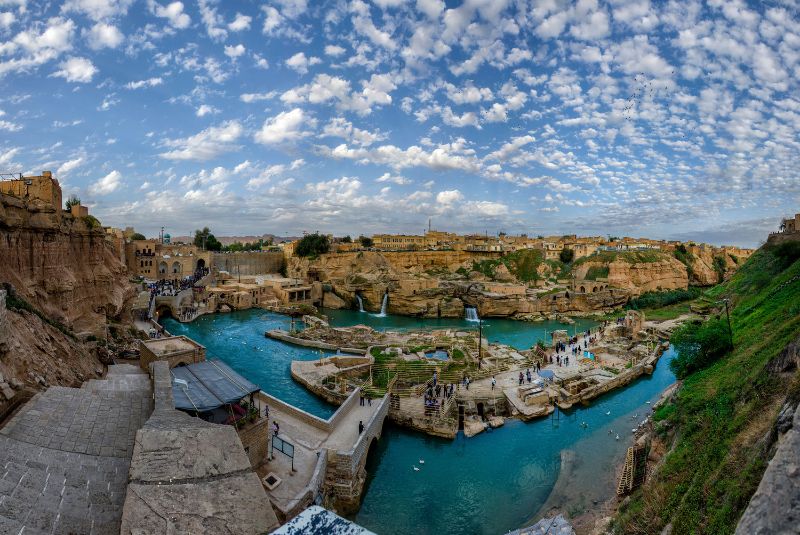
The Shushtar Hydraulic System takes advantage of the natural topography of the area, utilizing the Karun River and its network of canals to manage water distribution for various purposes. The system includes intricate structures such as the Band-e Kaisar dam, which diverted water from the river into a complex series of canals, tunnels, and basins. These canals were engineered to facilitate irrigation for agricultural lands, supply water to the city, and power numerous watermills and industrial facilities.
The geography of Shushtar and its surrounding landscape plays a pivotal role in the effectiveness of the hydraulic system. The undulating terrain allowed for the creation of waterfalls and cascades, which not only provided aeration to the water but also harnessed the energy needed to drive the mills and other machinery. This integration of human infrastructure with the natural landscape is a prime example of sustainable engineering, designed to meet both practical needs and environmental constraints.
Components of the Hydraulic System in Shushtar
The Shushtar Historical Hydraulic System is a symphony of architectural marvels, ingeniously designed to harness the power of water for the benefit of the community. This intricate web of components showcases the brilliance of ancient engineering, seamlessly integrating dams, canals, bridges, water mills, and waterfalls into a cohesive masterpiece.
Dams

Dams played a vital role in regulating the flow of the Karun River. These impressive structures, built with a combination of stone, brick, and clay, directed water to the system's canals while preventing flooding. The Band-e Mizan and Band-e Mahi are two prominent dams that stand as testimony to the craftsmanship of ancient engineers.
Canals
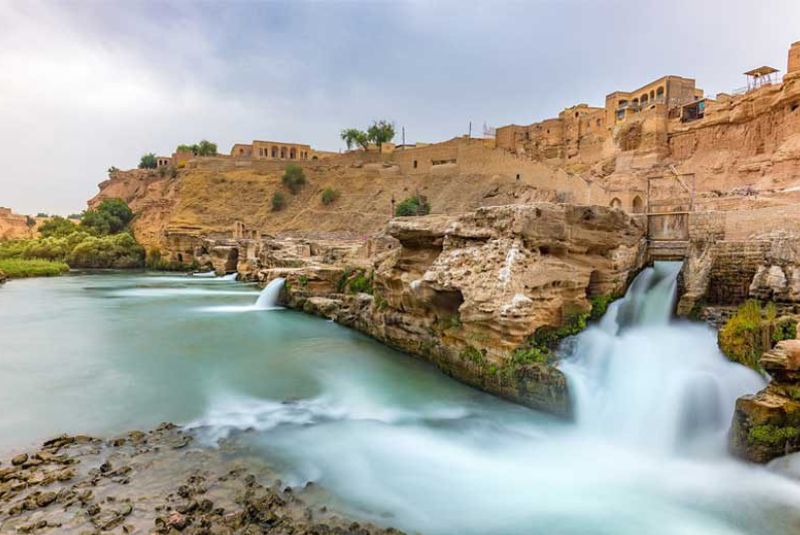
The system's network of canals meticulously channeled water to various areas, providing irrigation for fields and sustenance for the community. These channels were a lifeline that distributed water from the dams to water mills and the town itself, exemplifying the system's intricate planning.
Bridges
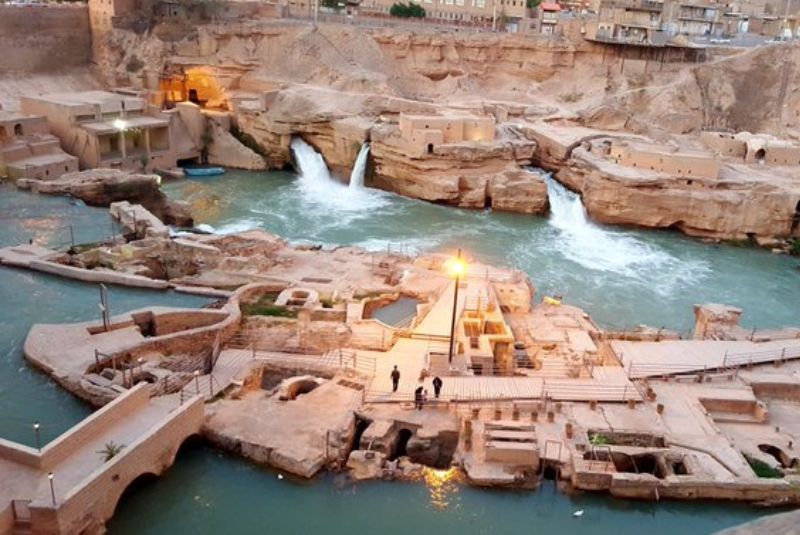
Among the most iconic components, the Band-e Kaisar, or Caesar's Bridge, stands as a testament to the system's grandeur. This bridge is not only an architectural marvel but also served as a pathway for pedestrians and animals. Its double-deck design allowed the flow of water underneath, showcasing the innovative blend of functionality and aesthetics.
Water Mills

The water mills integrated into the system harnessed the river's energy to grind grains and power various industries. These mills were a cornerstone of Shushtar's economic activity, transforming the system into a hub of productivity and innovation.
Waterfalls

The inclusion of majestic waterfalls, such as the stunning waterfall of the Band-e Mizan, added both beauty and functionality to the system. These waterfalls regulated water levels and maintained the balance between the system's components.
Band-e Kaisar (Caesar's Bridge)
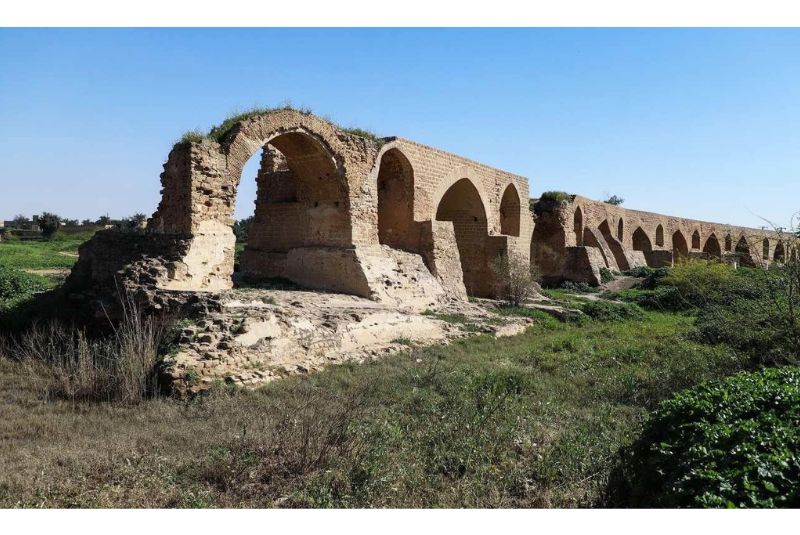
The Band-e Kaisar, the most famous bridge of the system, is a masterpiece of ancient architecture. Built during the reign of the Roman Emperor Valerian, this bridge combined utility with elegance, creating an awe-inspiring sight that has endured through the ages.
Band-e Mizan
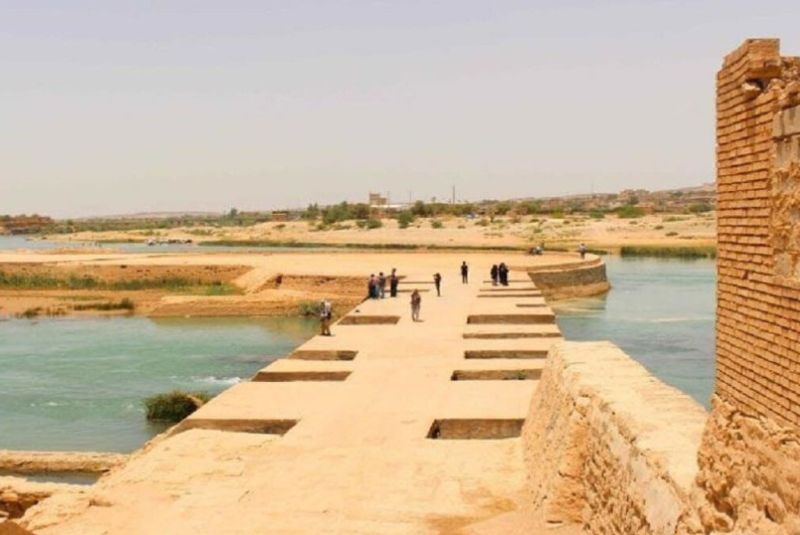
The Band-e Mizan, also known as the Gargar Bridge, is an engineering marvel that showcases meticulous design. Its strategic location allowed for the control of water levels, ensuring a balanced flow through the entire system.
Band-e Mahi
The Band-e Mahi, with its multiple sluice gates, demonstrates the system's ability to adapt to changing water conditions. This bridge, designed with exceptional precision, showcased the advanced knowledge of hydraulic engineering.
The functionality of the Shushtar Hydraulic System
This feat of ancient engineering not only facilitated irrigation but also sustained urban life, a tribute to the advanced knowledge and creative problem-solving of its architects.
Water Management for Agriculture and Urban Life
At its core, the system's primary function was to manage water resources for the dual purposes of agricultural irrigation and urban use. The canals, strategically designed, distributed water to fertile lands, nurturing crops and sustaining livelihoods. Meanwhile, the urban areas of Shushtar benefitted from the availability of clean water, contributing to the town's growth and prosperity.
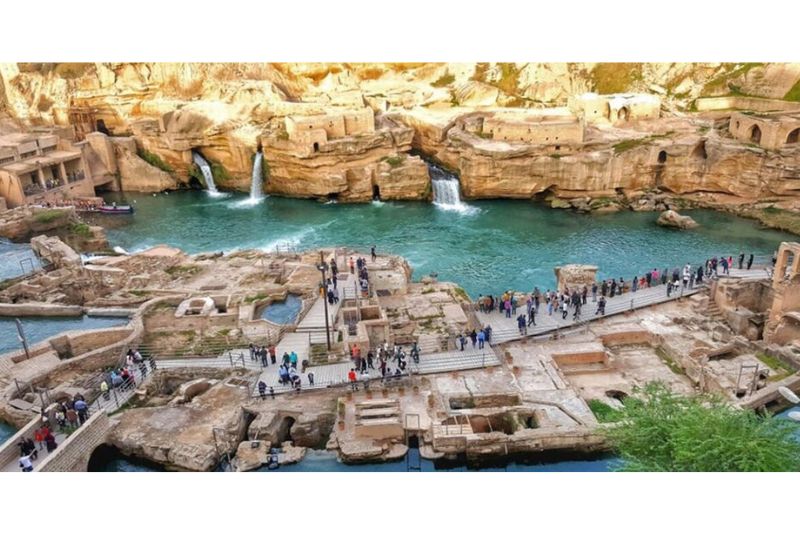
Innovative Engineering Techniques
The construction of the Shushtar hydraulic system employed ingenious engineering techniques that showcased a profound understanding of hydraulics and material science. Some notable techniques included:
- Hydraulic Gates and Sluices: Carefully designed gates and sluices regulated water flow, preventing wastage and controlling the distribution of water to different areas.
- Waterfall Cascades: Ingenious manipulation of waterfalls not only added aesthetic value but also maintained water levels and pressure, ensuring a steady supply of water.
- Double-Decker Bridge Design: The Band-e Kaisar's innovative double-decker design allowed for pedestrians to cross while simultaneously enabling the flow of water underneath.
- Arch and Vault Construction: The use of arches and vaults in bridges and structures distributed weight evenly, enabling them to withstand the forces of water and time.
Adaptation and Resilience
What sets the Shushtar Hydraulic System apart is its adaptability. The system's intricate mechanisms responded to changing water levels and conditions, a feat that demonstrated the architects' mastery over hydraulic dynamics. This resilience allowed the system to withstand floods, droughts, and other challenges, ensuring its consistent performance.
Cultural Significance
The Shushtar Historical Hydraulic System reflects the advanced knowledge and cultural significance of its time, leaving an indelible mark on both history and modern understanding.

Ancient Persian Engineering Brilliance
The meticulous design, precision in construction, and harmonious integration with the environment speak volumes about the intellectual and technical capabilities of the civilizations that contributed to its creation. It showcases a culture that held water management, agriculture, and urban life in high regard, investing considerable effort into crafting a solution that addressed these essential needs.
Impact on the Local Community
Beyond its functional role, the hydraulic system held immense cultural value for the local community. It was more than just a collection of components; it was a source of identity and pride. The system's availability of water for agriculture and daily life elevated the quality of life for Shushtar's residents. It facilitated trade, allowed for the cultivation of crops, and fostered a sense of unity among the people who relied on its success.
Shaping the Region's Culture
The cultural impact of the Shushtar Hydraulic System reverberated throughout the region. Its existence became intertwined with the identity of Shushtar, influencing local customs, traditions, and even artistic expressions. The system's aesthetic beauty, architectural sophistication, and ingenuity behind its creation found their way into the region's art, literature, and collective memory.
Living Legacy
Today, the Shushtar Historical Hydraulic System continues to serve as a testament to the cultural and engineering heritage of ancient Persia. Its recognition as a UNESCO World Heritage Site in 2009 reinforces its global importance, making it a source of pride for Iranians and a destination for curious travelers seeking to connect with the historical roots of human innovation.
Best Time to Visit Shushtar Historical Hydraulic System
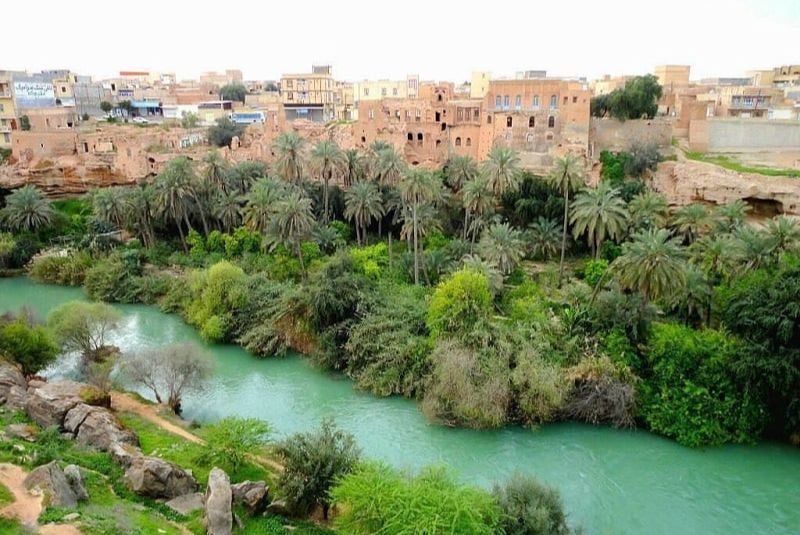
The best time to visit the Shushtar Historical Hydraulic System and the surrounding region is during the spring (March to May) and fall (September to November) months. These seasons offer more moderate temperatures, making it comfortable to explore outdoor attractions and historical sites. Here's why:
Spring (March to May):
- Pleasant Weather: Spring brings mild temperatures and blooming landscapes, making it an ideal time for outdoor activities and sightseeing.
- Cultural Festivals: You might have the chance to experience Nowruz, the Iranian New Year, which falls around March 20th. It's a time of cultural celebrations and festivities.
Fall (September to November):
- Mild Climate: Like spring, fall offers comfortable temperatures that are conducive to exploring outdoor attractions.
- Harvest Season: Fall is the harvest season, and you can experience the vibrancy of local markets and taste fresh produce.
Shushtar Hydraulic System Nearby Attractions
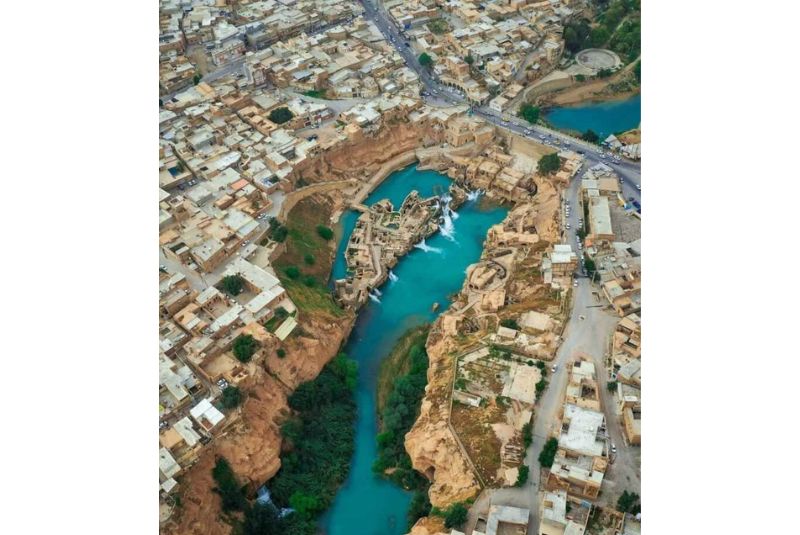
- Shushtar Historical Sites: Discover additional historical landmarks within Shushtar, offering insights into the town's rich past.
- Shushtar Waterfall Park: Explore the lush Shushtar Waterfall Park, a serene natural oasis perfect for relaxation and picnics.
- Shushtar Bazaar: Immerse yourself in local life at the bustling Shushtar Bazaar, where you can find handicrafts, textiles, and traditional goods.
- Chogha Zanbil: Visit the ancient Elamite ziggurat of Chogha Zanbil, another UNESCO World Heritage Site, located around 45 kilometers from Shushtar. It's a testament to ancient architecture and religious practices.
- Ahvaz Cultural Sites: Explore the nearby city of Ahvaz, with its cultural attractions, museums, and vibrant markets, offering a deeper understanding of Khuzestan's heritage.
- Local Festivals: If your visit aligns with local festivals or events, such as Nowruz (Iranian New Year), immerse yourself in the region's cultural celebrations for a truly authentic experience.
Tips for Visiting Shushtar Hydraulic System
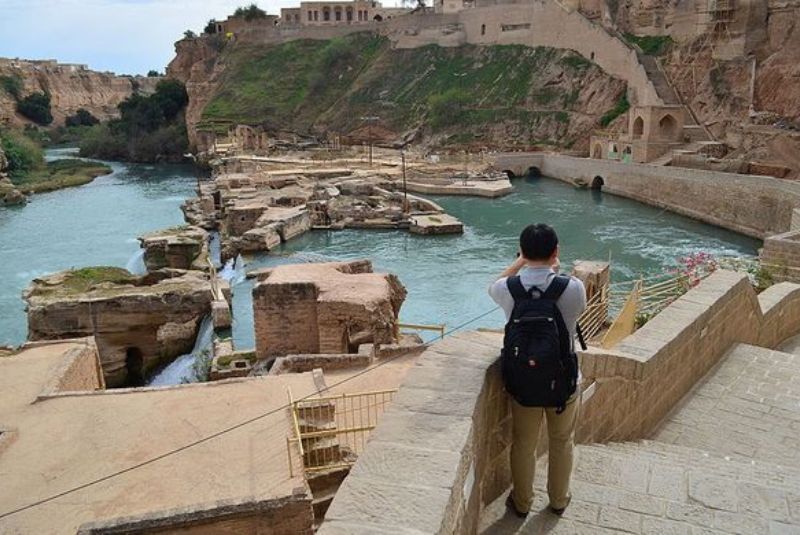
Here are some useful tips to make the most of your visit to the Shushtar Historical Hydraulic System:
- Plan Ahead: Research the site's accessibility, opening hours, and any entry fees before your visit to avoid any surprises.
- Guided Tours: Consider taking a guided tour to gain deeper insights into the system's history, architecture, and cultural significance.
- Comfortable Clothing: Wear comfortable clothing and sturdy footwear, as you'll likely be walking and exploring various parts of the site.
- Weather Consideration: Check the weather forecast and dress accordingly. Bring sunscreen, a hat, and sunglasses for protection from the sun.
- Camera and Binoculars: Capture the beauty of the site with your camera, and if possible, bring binoculars to better appreciate architectural details.
- Local Etiquette: Respect local customs and traditions by dressing modestly, especially in religious sites, and being considerate of cultural norms.
- Hydration: Carry a refillable water bottle to stay hydrated, especially during warmer months.
- Local Currency: Have some local currency (Iranian Rials) on hand for entrance fees, local purchases, and tips. Have a mix of cash and credit/debit cards, as some places might not accept cards.
- Language: While English might not be widely spoken, having a basic understanding of common Persian phrases can be helpful.
- Respect for History: Avoid touching or climbing on the ancient structures to preserve their integrity.
- Safety: Always prioritize your safety. Follow any site rules, stay in designated areas, and have emergency contact numbers handy.
Accommodation and Dining Options
- Shushtar Grand Hotel: A modern hotel offering comfortable rooms and amenities, conveniently located near the historical sites.
- Eram Hotel: A cozy budget-friendly option with clean rooms and a welcoming atmosphere.
- Traditional Inns: Experience local charm at inns like the Caravanserai Shushtar, where history meets hospitality.
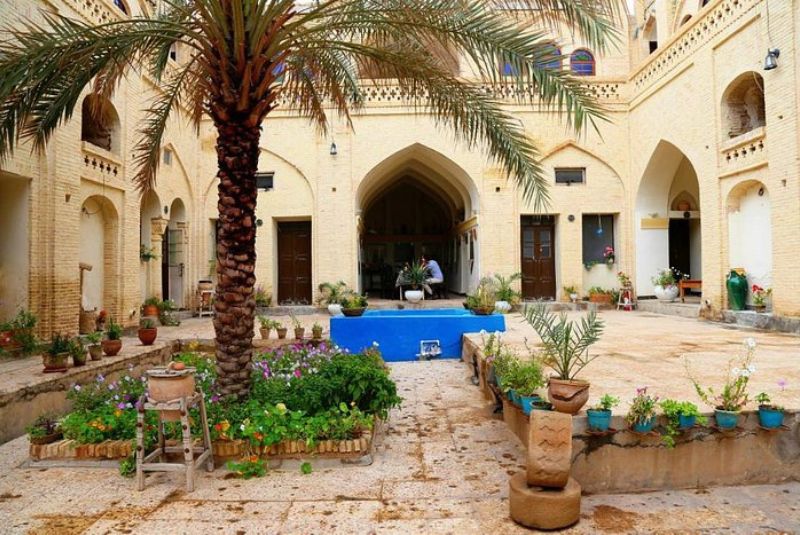
Dining in Shushtar
- Golha Restaurant: Enjoy traditional Iranian dishes in a pleasant setting, known for its kebabs and local specialties.
- Khaneye Mehr Restaurant: A popular choice for authentic Persian cuisine, offering a range of flavorful stews and rice dishes.
- Roozegar Restaurant: Relish local flavors by the Karun River, providing a picturesque dining experience.
- Bazarcheh Tea House: Immerse yourself in Iranian tea culture while enjoying scenic views of the river.
- Darvishi Café: A cozy spot offering a mix of Iranian and international delights, perfect for a leisurely afternoon.
Route to Reach Shushtar's Hydraulic Structures
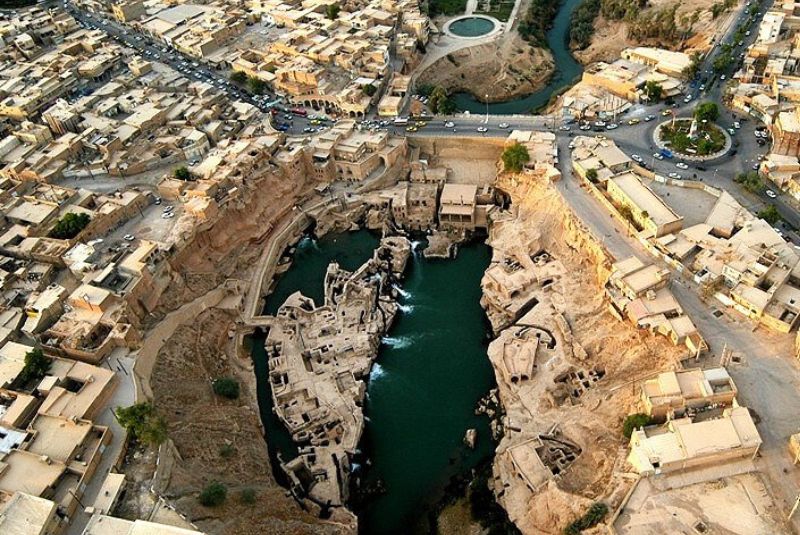
To witness the impressive structures of Shushtar, your journey leads you to Khuzestan, followed by the route to Shushtar. When traveling from Tehran, you can reach Shushtar via the Khorramabad-Andimeshk freeway, which approximately takes around 9 hours to reach the city. As you enter the city, clear signposts will direct you to this captivating attraction.
Visiting Hours and Entrance Fee
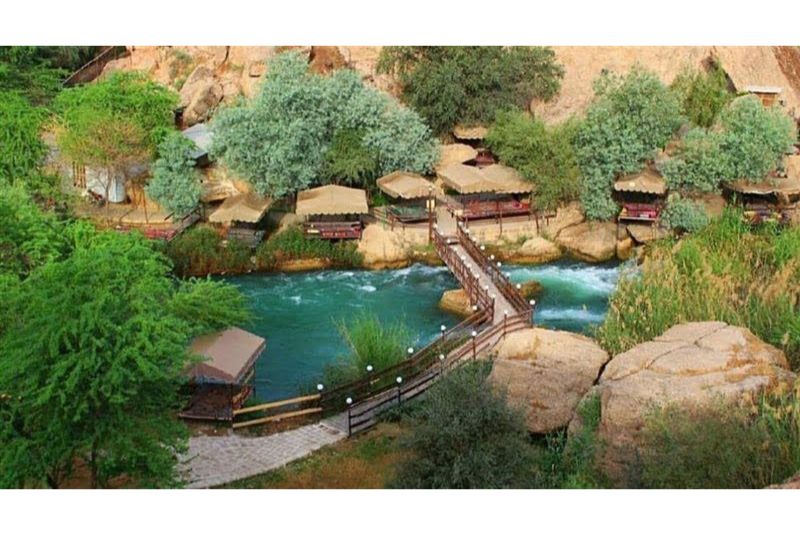
- Operating hours: During the first six months of the year, from 8:30 AM to 7:30 PM, and in the second six months, from 8:30 AM to 5 PM, except for holidays.
- Entrance Fee: A nominal entrance fee of 500,000 Iranian Rials is required for access. This fee equates to 50,000 Tomans, the local currency unit.
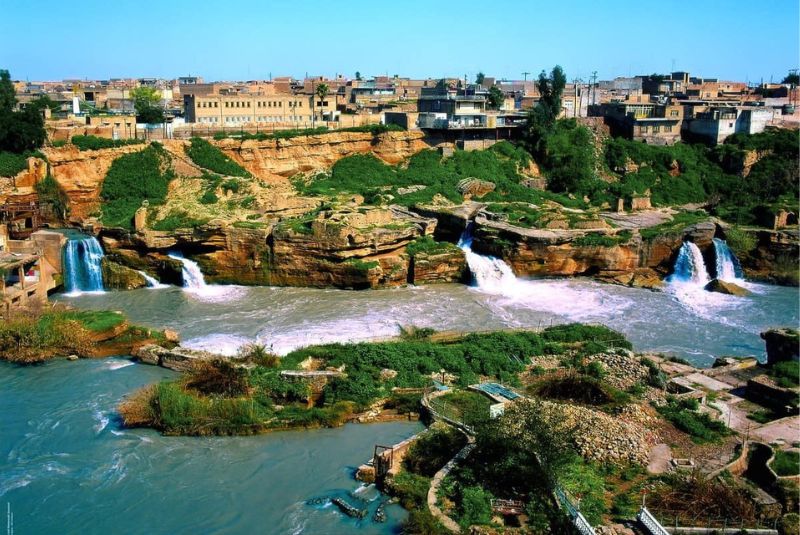
Bottom Line
The Shushtar Historical Hydraulic System stands as a captivating fusion of ancient engineering and nature's bounty. Wander through the intricate pathways, stand in awe of the resilient dams, and envision the bustling water mills that once powered industries. Remember that every stone you touch, every bridge you cross, and every whisper of water you hear carries the legacy of an ancient civilization's mastery.
Share your story!
Comment below and let us know about your Experience.
Your story inspires others!


Comment
Leave a Comment